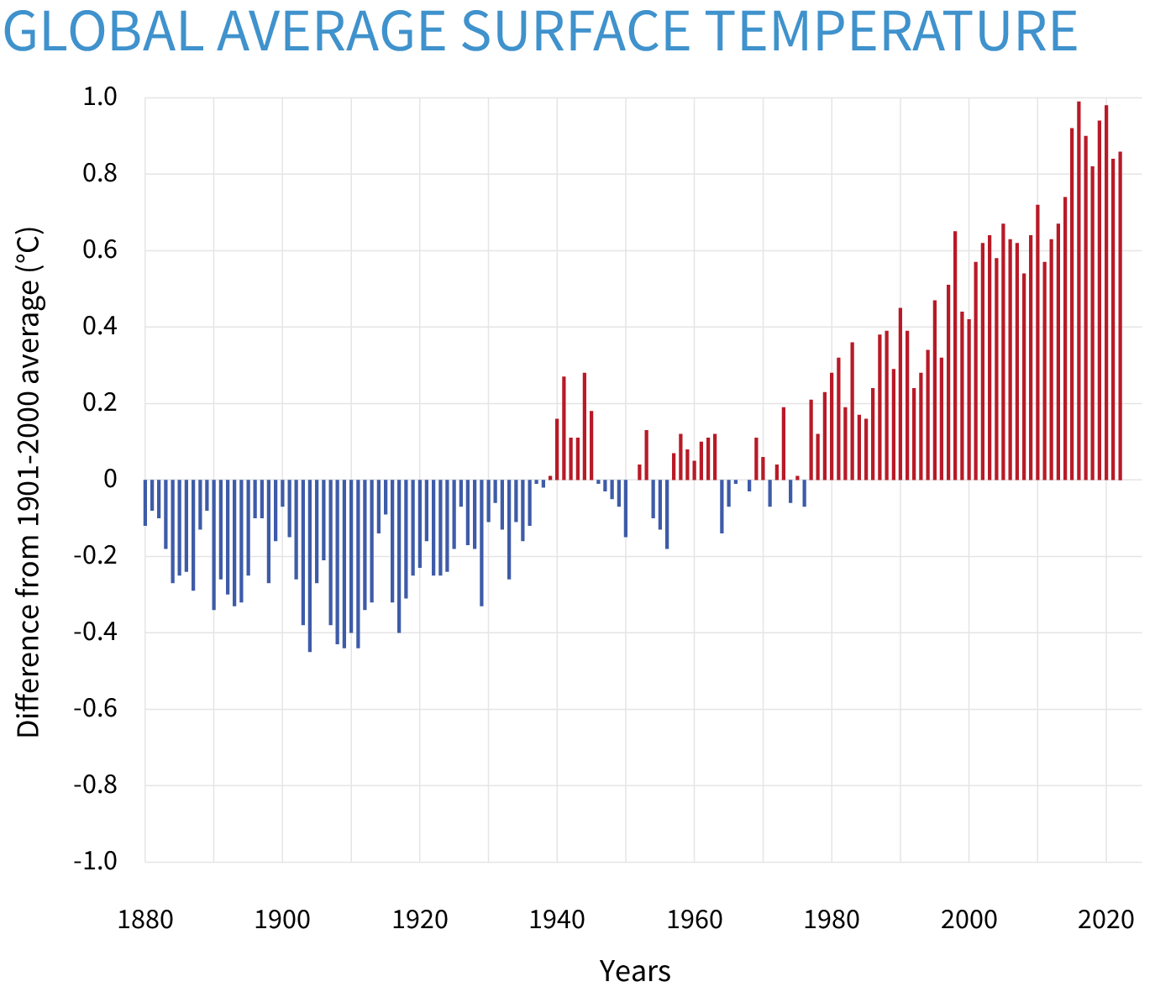
by Stephen Rumsey, Chairman of Permian Global
October 23, 2023- Last week, NOAA, the US climate authority the National Oceanic and Atmospheric Administration, published its global temperature data for September 2023. As predicted, following the pattern since June this year, it was the warmest September by a significant margin (June 2023 was a record by 0.13 degrees C, July by 0.21, August by 0.25, and September by 0.46). This compares with a rise of global temperatures of 0.9 degrees C over the last 50 years, and a rise of 0.3 degrees over the previous 50 years. Recent temperature increases will have been exacerbated by the massive El Niño, which will most likely impact temperatures and drought until at least September 2024. It provides an insight of what the ‘normal’ temperatures will be in the 2030s. The next El Niño is expected in 2027/2028/2029 and we do not know if this current one is exceptional or a precursor to a much more vigorous series of El Niños in the future.

(Yearly surface temperature compared to the 20th-century average from 1880–2022. Blue bars indicate cooler-than-average years; red bars show warmer-than-average years. NOAA Climate.gov graph, based on data from the National Centers for Environmental Information)
El Niño’s Role in Climate Extremes: Fires, Droughts, and Worsening Conditions
- 2023 will almost certainly be the hottest ever year on record. NOAA records go back to 1850, but considering the volume of greenhouse gas (GHG) in the atmosphere today, it would be reasonable to predict 2023 could be the hottest year for 2 or 3 million years. 2024 will probably be hotter, as the El Niño is only just getting started.
- Temperature records are normally set in El Niño periods (typically affecting two years), which come around every four to five years. This is an exceptionally strong El Niño. We are already seeing news of droughts and fires in the Amazon, notably near Manaus, the state capital of Amazonas. Next year we will most likely see far more publicity about fires in the Amazon and Borneo, as well as in other parts of the world, such as Australia, Siberia, the US and Canada.
- It is clear that the global response to the threat of disastrous climate change is inadequate. Currently, we are on course for 3 degree C of warming, of which we have already seen 1.2 degrees. It should be noted that 4 degrees C is consistent with the melting of all the remaining sea ice and glaciers, and a sea level rise of 80 m (since the last Ice Age sea level rose by 120 m, with a temperature rise of 5.5 degrees C). We do not know exactly the time lag between warming and ice melting, but today’s data suggests that it might happen quicker than previously imagined. It will also probably not be linear, but instead rather lumpy, with significant rises of sea level occurring during a year or two.
- Virtually all the global efforts for climate change mitigation have so far gone into decarbonisation. Decarbonisation is absolutely necessary but most likely not sufficient to avoid disastrous change. Terrestrial emissions are difficult to analyse and hard to combat but they are likely a major cause of the acceleration over recent decades. Humanity needs to wake up and reset the strategy. Terrestrial emissions represent a hugely under-estimated problem, but the reversal represents a real opportunity to bring atmospheric levels of carbon dioxide back down to acceptable levels.
Misinformation and Distortion: Barriers to Effective Climate Action
- Information about necessary climate actions for policymakers and corporations continues to be distorted by party politics, special interest groups and a large part of the media. Frequently, climate targets are presented by politicians as ‘wedge’ issues to distract voters from long-term investments and instead secure short-term electoral successes. Special interest groups, such as the Heartland Institute in the US or the Global Warming Policy Foundation in the UK, have long used tactics of climate disinformation, distraction and delay in pursuit of unfettered neoliberalism, free of regulation or carbon pricing. The media also has a history of parroting climate denialist talking points as news, but even today, supposedly well-intentioned news outlets like the Guardian are helping to undermine climate actions through a tendency to opt for ideologically driven anti-market campaigning over balanced fact-based journalism. This is exacerbated by the sector-wide commercial pressure on editors to generate hyper-polemic, fault-finding, sensational reporting that competes with social media for readers attention.
Incentivizing Forest Conservation: The Key to Emission Reduction
- It is not too late to adopt correct policies and mechanisms to avoid disastrous climate change. But to do so, we must act fast and face the realities of how genuine climate mitigation can be achieved. Rapid decarbonisation of industry and the transition to clean energy requires politicians and voters to face up to the costs and social disruption this is going to have on our lives. We must also recognise the need to go beyond decarbonisation. Deforestation and other destructive land use changes are major causes of emissions that must be halted. If standing intact, or recovering, forests are valued more than the alternative land use, we can incentivise protection. Forest conservation projects financed through the voluntary carbon market are the most effective and efficient tool we have for doing this. Many businesses, organisations and governments already recognise this, but a vocal minority of seemingly idealogically driven journalists and NGOs, particularly those reliant on competing donor funding models, are using disinformation to prevent the scaling up of the market.
For more news click HERE
CATEGORIES:
SHARE: